Figures & data
Table I. The variables and their lowest, middle, and highest values.
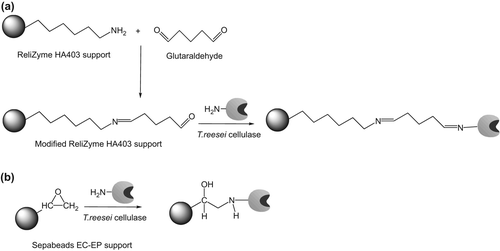
Table II. The results of using 3-factor and 3-level BBD for the optimal conditions of cellulase immobilization.
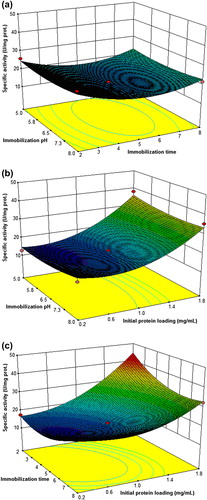
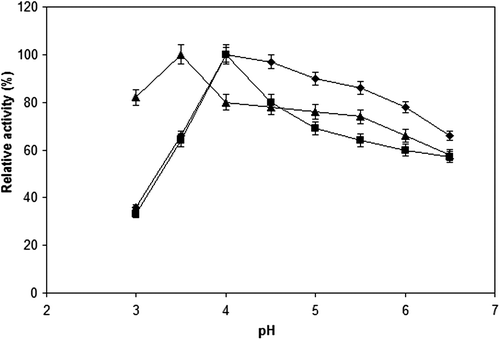
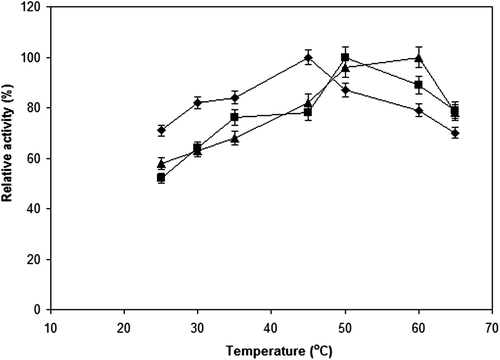
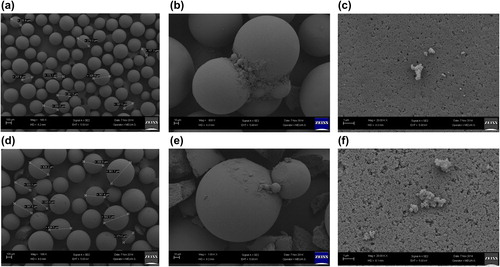
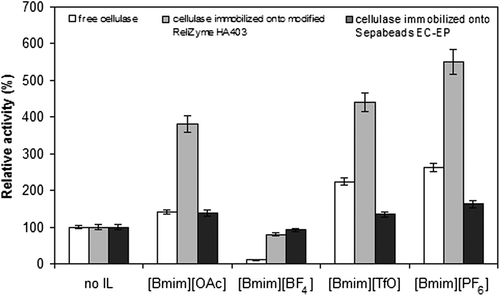
![Figure 7. The hydrolysis of CMC in different volume ratios of [Bmim][PF6]/buffer media. The pH/temperature values were 4.0/45°C, 4.0/50°C and 3.5/60°C, respectively, for the free cellulase, cellulase immobilized onto Sepabeads EC-EP, and onto modified ReliZyme. Values for 100% activities are 170, 66, and 60 U/mg protein, respectively, for the free cellulase, cellulase immobilized onto Sepabeads EC-EP, and onto ReliZyme HA403.](/cms/asset/0a9dd0cd-889b-4224-aec4-02004fdd06d7/ianb_a_1024842_f0007_b.gif)
Register now or learn more
Free access






![Figure 7. The hydrolysis of CMC in different volume ratios of [Bmim][PF6]/buffer media. The pH/temperature values were 4.0/45°C, 4.0/50°C and 3.5/60°C, respectively, for the free cellulase, cellulase immobilized onto Sepabeads EC-EP, and onto modified ReliZyme. Values for 100% activities are 170, 66, and 60 U/mg protein, respectively, for the free cellulase, cellulase immobilized onto Sepabeads EC-EP, and onto ReliZyme HA403.](/cms/asset/0a9dd0cd-889b-4224-aec4-02004fdd06d7/ianb_a_1024842_f0007_b.gif)
Please note: Selecting permissions does not provide access to the full text of the article, please see our help page How do I view content?
To request a reprint or corporate permissions for this article, please click on the relevant link below:
Please note: Selecting permissions does not provide access to the full text of the article, please see our help page How do I view content?
Obtain permissions instantly via Rightslink by clicking on the button below:
If you are unable to obtain permissions via Rightslink, please complete and submit this Permissions form. For more information, please visit our Permissions help page.
People also read lists articles that other readers of this article have read.
Recommended articles lists articles that we recommend and is powered by our AI driven recommendation engine.
Cited by lists all citing articles based on Crossref citations.
Articles with the Crossref icon will open in a new tab.